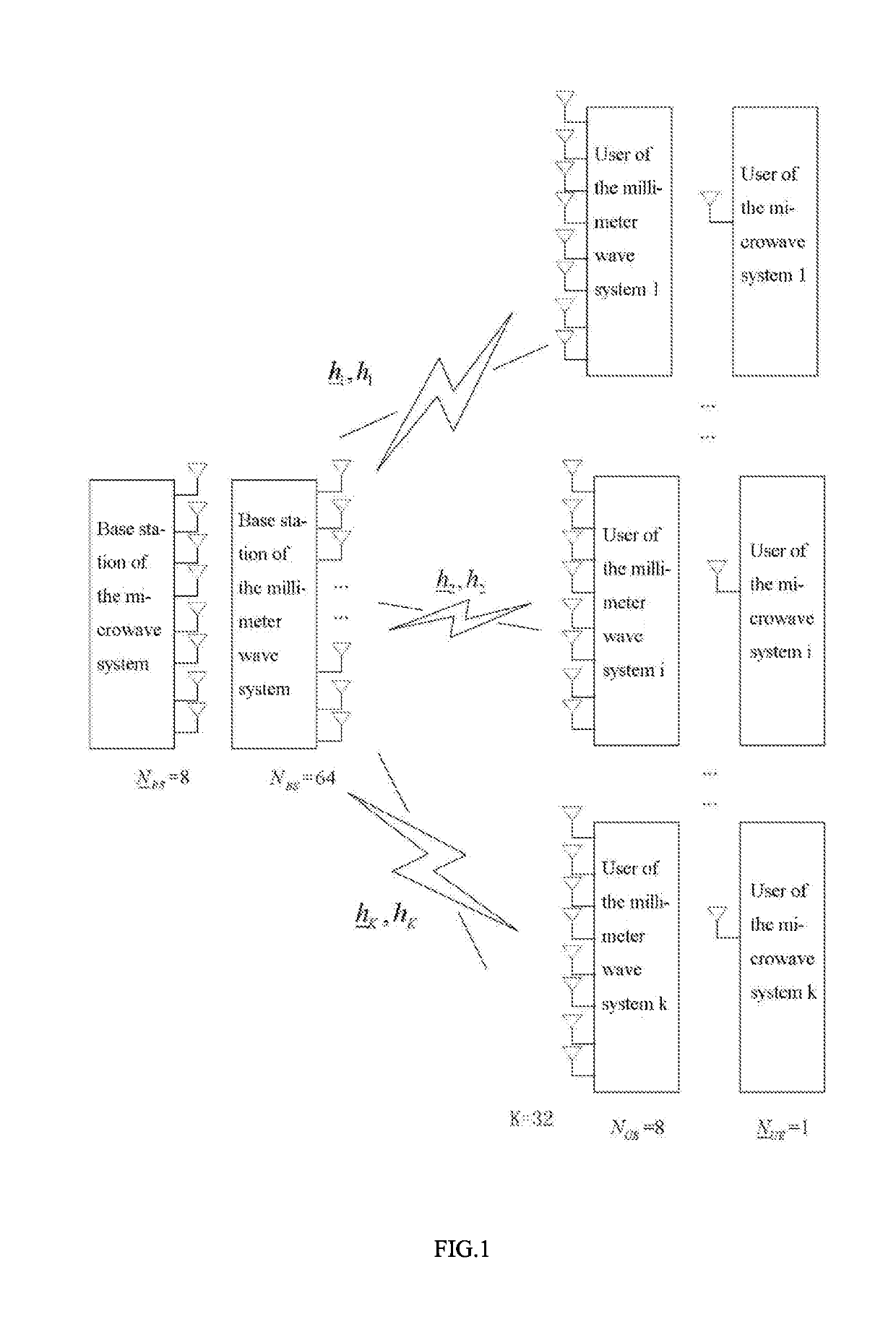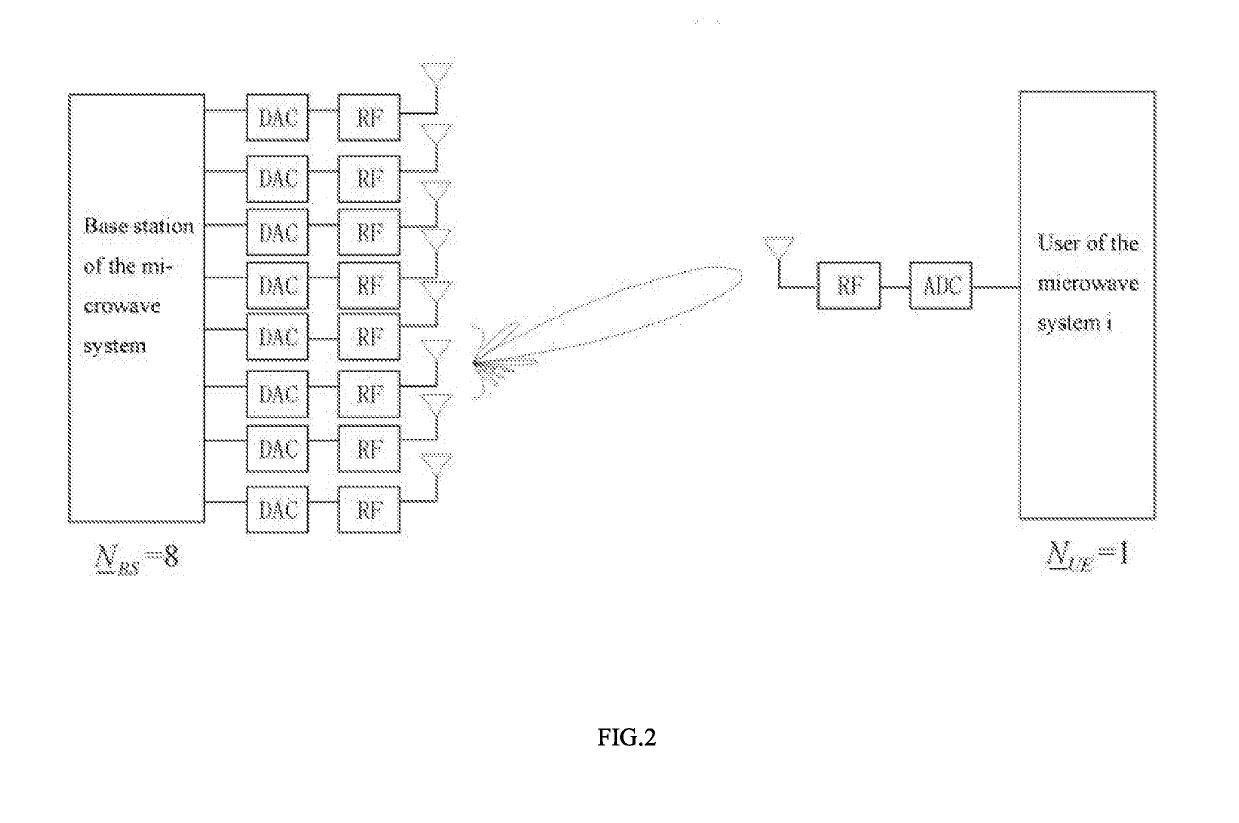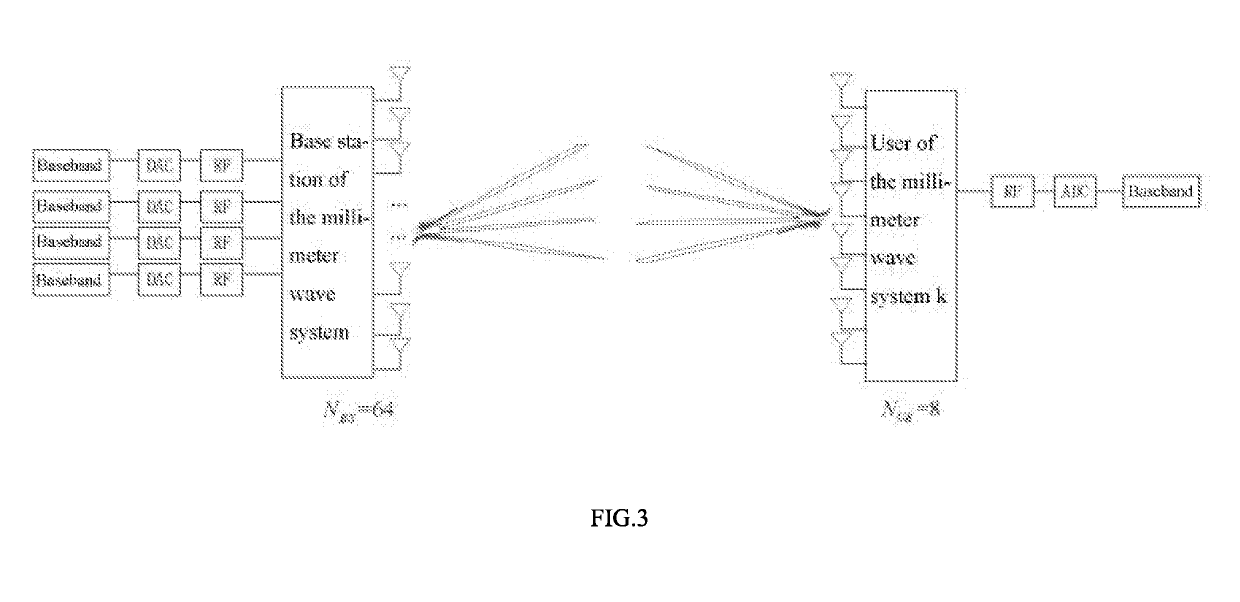Method for grouping users based on out-of-band spatial information in multi-user millimeter wave system
a multi-user, spatial information technology, applied in diversity/multi-antenna systems, digital transmission, high-level techniques, etc., can solve the problem of severe signal propagation loss of millimeter wave bands, difficult channel estimation in millimeter wave systems, and general inability to obtain digital samples from each antenna. problem, to achieve the effect of low received signal-to-noise ratio, high estimation error probability and accurate initial rang
- Summary
- Abstract
- Description
- Claims
- Application Information
AI Technical Summary
Benefits of technology
Problems solved by technology
Method used
Image
Examples
Embodiment Construction
[0032]The technical solution of the present invention will be further described below in detail with reference to the drawings by embodiments.
[0033]The solution of the present invention is applied to a multi-wideband MIMO system as shown in FIG. 1. Considering that the received signal-to-noise ratio in the initial beam search stage in a multi-stage codebook algorithm is too low at present, in the present invention, spatial information of a microwave system is used to assist in establishing millimeter wave links, especially to find an optimal transceiver beam pair for an analog or hybrid beamforming millimeter wave system. Since the microwave system is not equipped with any large antenna array, it is assumed that the microwave system has narrow-band MIMO channels and is of a traditional all-digital structure. Both the microwave system and the millimeter wave system use uniform linear arrays on the receiving and transmitting sides. For ease of description, taking specific systems show...
PUM
 Login to View More
Login to View More Abstract
Description
Claims
Application Information
 Login to View More
Login to View More - R&D
- Intellectual Property
- Life Sciences
- Materials
- Tech Scout
- Unparalleled Data Quality
- Higher Quality Content
- 60% Fewer Hallucinations
Browse by: Latest US Patents, China's latest patents, Technical Efficacy Thesaurus, Application Domain, Technology Topic, Popular Technical Reports.
© 2025 PatSnap. All rights reserved.Legal|Privacy policy|Modern Slavery Act Transparency Statement|Sitemap|About US| Contact US: help@patsnap.com



